Solar System: Things To Know This Week
Solar System: Things to Know This Week
In addition to the Mercury transit of the sun today, there are a few other things you should know about our solar system this week:
1. Mars, Ready for its Close-Up
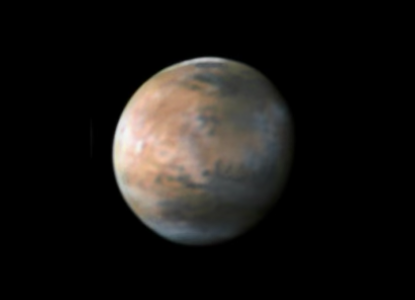
Mars will soon be closer to Earth than it has been for 11 years, presenting a great opportunity for backyard sky watchers.
2. Fire and Ice
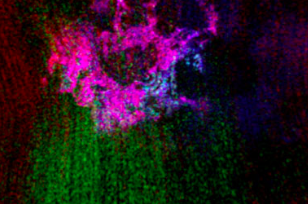
Our spacecraft have an even closer view of Mars, and that fact regularly leads to some intriguing discoveries. The latest: volcanoes may have erupted beneath an ice sheet there billions of years ago. The above image is a mineral map of part of the Martian surface.
3. Icy Hydra

Meanwhile, our New Horizons spacecraft has sent home the first compositional data about Pluto’s four small moons. The new data show the surface of Hydra is dominated by nearly pristine water ice–confirming hints that scientists picked up in images showing Hydra’s highly reflective surface.
4. Ceres, Ever Sharper

The mission director for our Dawn mission writes, “Ceres, which only last year was hardly more than a fuzzy blob against the stars, is now a richly detailed world, and our portrait grows more elaborate every day.”
5. Join us at Jupiter

Our Juno mission arrives at the giant planet on Jul. 4. Meanwhile, all amateur astronomers are invited to take part in a worldwide effort to identify potential observations for the spacecraft to make once it’s in orbit. Find out how to join HERE.
Want to learn more? Read our full list of the 10 things to know this week about the solar system HERE.
Make sure to follow us on Tumblr for your regular dose of space: http://nasa.tumblr.com
More Posts from Maevetheeuropan and Others

Ice is no match for CSU-developed coating
Anyone who’s ever chipped ice off a windshield or nervously watched a plane get de-iced, take note: Colorado State University researchers have invented an ice-repellent coating that out-performs today’s best de-icing products.
Researchers led by Arun Kota, assistant professor of mechanical engineering and biomedical engineering, have created an environmentally friendly, inexpensive, long-lasting coating that could keep everything from cars and ships to planes and power lines ice-free.
Their innovation, described in the Journal of Materials Chemistry, is a gel-based, soft coating made out of PDMS (polydimethylsiloxane), a silicone polymer gel with already widespread industrial use. Their experiments were supported by careful analysis of ice adhesion mechanics.
The performance measure of de-icing coatings is called ice adhesion strength - the shear stress necessary to remove ice from a surface - and is measured in kilopascals (kPa). Kota’s group demonstrated ice adhesion strength for their coating of about 5 kPa. By contrast, soft coatings available on the market have ice adhesion strength of about 40 kPa (lower is better). Other types of de-icing coatings made of rigid materials like Teflon typically perform at around 100 kPa.
Read more.

What caused this outburst of this star named V838 Mon? For reasons unknown, this star’s outer surface suddenly greatly expanded with the result that it became the brightest star in the entire Milky Way Galaxy in January 2002. Then, just as suddenly, it faded. A stellar flash like this had never been seen before – supernovas and novas expel matter out into space.
Although the V838 Mon flash appears to expel material into space, what is seen in the above GIF from the Hubble Space Telescope is actually an outwardly moving light echo of the bright flash.
In a light echo, light from the flash is reflected by successively more distant rings in the complex array of ambient interstellar dust that already surrounded the star. V838 Mon lies about 20,000 light years away toward the constellation of the unicorn (Monoceros), while the light echo above spans about six light years in diameter.
Credit: NASA, ESA
To discover more, visit: https://www.nasa.gov/multimedia/imagegallery/image_feature_2472.html
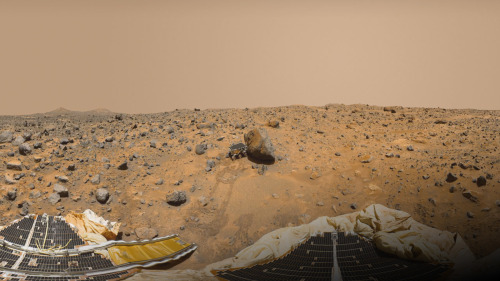
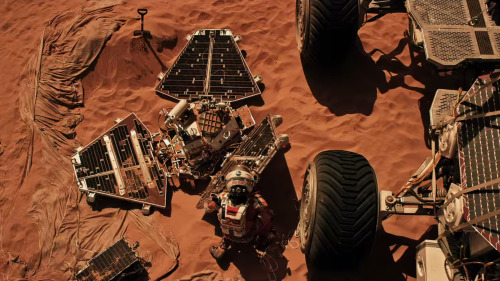
Mars Pathfinder & Sojourner Rover (360 View) Explained
Thanks to new technology, we can take a 360-degree tour of the 1997 Pathfinder mission landing site, including Sojourner, the first Mars rover. Check out this interactive YouTube panorama, and then…
…keep scrolling to find out more about each point of interest, how the Pathfinder mission compares to “The Martian” and NASA’s real Journey to Mars.

Yogi
“Yogi” is a meter-size rock about 5 meters northwest of the Mars Pathfinder lander and the second rock visited by the Sojourner Rover’s alpha proton X-ray spectrometer (APXS) instrument. This mosaic shows super resolution techniques applied to help to address questions about the texture of this rock and what it might tell us about how it came to be.

Twin Peaks
The Twin Peaks are modest-size hills to the southwest of the Mars Pathfinder landing site. They were discovered on the first panoramas taken by the IMP camera on the July 4, 1997, and subsequently identified in Viking Orbiter images taken over 20 years ago. They’re about 30-35 meters tall.

Barnacle Bill
“Barnacle Bill” is a small rock immediately west-northwest of the Mars Pathfinder lander and was the first rock visited by the Sojourner Rover’s alpha proton X-ray spectrometer (APXS) instrument. If you have some old-school red-cyan glasses, put them on and see this pic in eye-popping 3-D.

Rock Garden
The Rock Garden is a cluster of large, angular rocks tilted in a downstream direction from ancient floods on Mars. The rocky surface is comprised of materials washed down from the highlands and deposited in this ancient outflow channel.

MOAR INFO
Pathfinder Lander & Sojourner Rover
Mission Facts [PDF]
Science Results
Rock & Soil Types


This vista was stitched together from many images taken in 1997 by Pathfinder.

Pathfinder and Sojourner figure into Mark Watney’s quest for survival on the Red Planet in the book and movie, “The Martian.” See JPL’s role in making “The Martian” a reality: http://go.nasa.gov/1McRrXw and discover nine real NASA technologies depicted in “The Martian”: http://go.nasa.gov/1QiyUiC.

So what about the real-life “Journey to Mars”? NASA is developing the capabilities needed to send humans to Mars in the 2030s. Discover more at http://nasa.gov/journeytomars and don’t forget to visit me when you make it to the Red Planet. Until then, stay curious and I’ll see you online.

Telescope Instruments Part One:
What they are (humor me)
Astronomy is an old field. For ages astronomers have had to be satisfied looking at the sky and interpreting what they saw as somehow connected to their Earthly lives. Zeus carried Ganymede off into the heavens and similarly the sky was a place of supernatural awe, somewhere that held your fortunes, a place the dead go, somewhere a child could be carried off to by a god.
Remarkable natural events like storms and lightning blistering over our us long seemed to confirm any and all suspicion and belief. For what could be responsible for something like lightning but a god? What else could the Sun be, but some divine light? Though the atoms in our bodies don’t remember where they come from, the answers have always been there, elusive.
When people finally started looking from the Sun to the stars in skeptical comparison, it was symbolically the beginning of a new age for astronomy. The stars weren’t pinholes in the sky, nor were they jewels (well some are “diamonds” but that was just a remarkably good guess!). Stars, people gradually realized, were kin to our own Sun. Could there be other Earths?
This truth is so grand, and it implies a universe so vast that it was more unbelievable to people than to simply go on assuming the lightning came from the likes of a “Zeus”. Human creativity, intellect and curiosity grew, however. We kept exploring and questioning until at last the technology we created harnessed the very electricity we used to fear.
In a sublime twist of irony Polyphemus, fire in hand, took to the heavens.
We have learned, in our exploration of nature, that we are not helpless. The divinity we saw in the heavens is literally same stuff that makes our blood red. We were of the sky all along and all it took was the most human part of us to figure this out: our curiosity.
Embracing our knack for exploration, however wasn’t exactly an easy truth. Our stories of gods in chariots dragging the Sun across the sky weren’t simply backwards: they were entirely simplistic. The universe astounded us for so long because our imaginations failed in grandiosity. The universe was the better magician and we simply didn’t know the tricks.
The technology which has resulted from our scientific exploration has similarly become more sophisticated. Out of necessity, we constantly invent new tools to solve old problems, which traditionally reveal another problem hitherto unknown.
The progression looks like this:
Astronomers stare up and wonder if the bright dot is a god or another planet.
Galileo invents the telescope and realizes that yes, there are other planets, but only a couple of the dots were visible - for most of them distance was too great to discern anything.
As math and science progressed, we became able to calculate the brightness, accounted for distance and it was obvious that all the bright dots unobservable with telescopes were roughly as bright as our Sun. Not all the dots fit this description though as some were very hazy and smoky looking.
Hubble then figures out that some of those hazy things are other galaxies, not just stars, but this extraordinary realization meant the universe was larger than the Milky Way! How could it be that another galaxy was all the way across space like that? Why did they seem to be moving farther from us faster, the farther they were?
I’ll stop there. You get the point. The progression of science has been met a proportional progression of mystery. This is as true today as it’s been since the dawn of science. The question then becomes this:
What is it that allows us to repeatedly push the darkness of ignorance away, to repeatedly domesticate the mysterious and turn the mystical forces of the universe to our personal use?
Our technology. Again, using our creativity and intellect as hammer and anvil, we forge miraculous solutions to unsolvable problems.
In astronomy, our resources are especially limited given the incredible distances that separate us from our targets. How can we possibly know anything about a planet orbiting a star hundreds of light years away?
In a way mother nature almost commit the perfect crime. It left one prolific clue behind though: light. Because of things like light’s dual wave-particle nature, techniques like spectroscopy and our growing ability to respond to and control our optics’ environments, astronomers are hot on multiple trails.
I want to explore and introduce you to some basic principles of the special mechanical eyes astronomers build which turn an otherwise invisible universe, into a bright, transparent scroll to our curiosity.
(Will be continued in part two)
(Image credit: NASA and Chris Gunn)
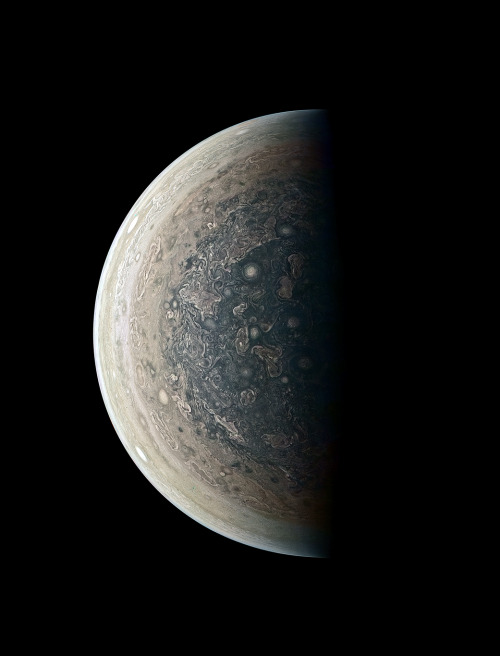
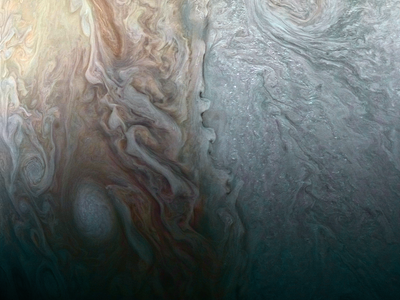



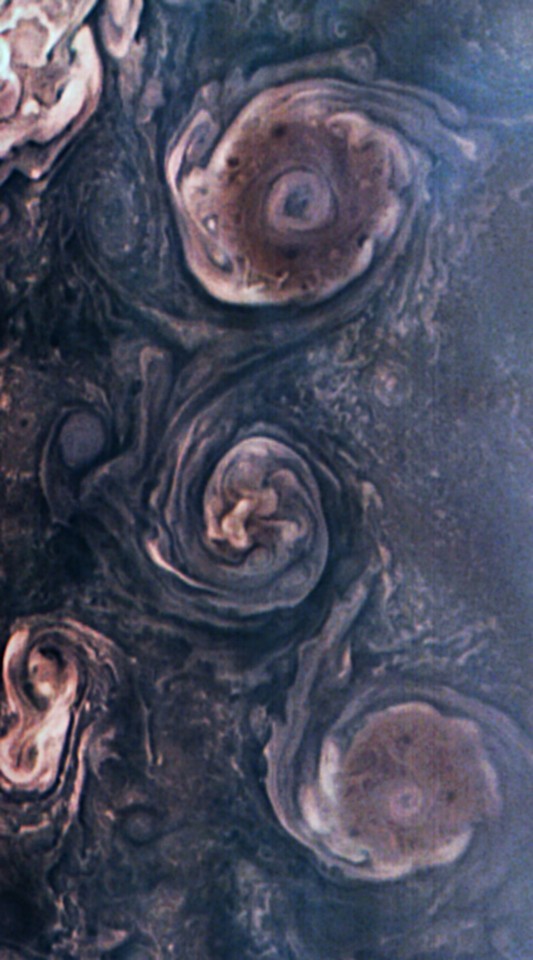



Images of Jupiter taken by JunoCam on NASA’s Juno spacecraft.

Mission Juno
Juno is a NASA spacecraft. It is exploring the planet Jupiter. Juno launched from Earth in 2011. It reached Jupiter in 2016. That was a five-year trip!
The name “Juno” comes from stories told by the Romans long ago. In the stories, Juno was the wife of Jupiter. Jupiter hid behind clouds so no one could see him causing trouble. But Juno could see through the clouds.
Juno has science tools to study Jupiter’s atmosphere. (The atmosphere is the layer of gases around a planet.) Juno will take the first pictures of Jupiter’s poles. The spacecraft will study the lights around Jupiter’s north and south poles, too.
Juno will help scientists understand how Jupiter was made. The spacecraft will help them learn how Jupiter has changed, too. The new discoveries can help us understand more about our solar system.
Sound of Jupiter’s Magnetosphere: Click here
Credit: NASA / JPL-Caltech / Mission Juno / Jason Major / Luca Fornaciari / Gerald Eichstädt


Scientists find another sign suggesting life existed on Mars
According to new research published in the Journal of Geophysical Research, scientists are getting even more indicators that life once existed on Mars. The latest proof? Carbonates found in 3.8 billion-year-old rock in the Huygens basin.
Follow @the-future-now
The Five W’s of an Expandable Habitat in Space
Who: In this case, it’s really a “what.” The Bigelow Expandable Activity Module (BEAM) is an expandable module developed by Bigelow Aerospace using a NASA patent conceptualized in the 1990s. It is made up of layers of fabric that will expand when installed and equalize with the pressure of the International Space Station.

What: Sensors inside BEAM will monitor temperature and radiation changes, as well as its resistance to potential orbital debris impacts. During its time on station, the airlock between BEAM and the rest of the space station will remained closed, and astronauts will enter only to collect data and help the experiment progress. If BEAM is punctured, the habitat is designed to slowly compress to keep the rest of the space station safe.
With the BEAM launch, deployment and time on station, Bigelow will demonstrate a number of expandable habitat capabilities, such as its folding and packing techniques, radiation protection capability and its thermal, structural and mechanical durability.

When: BEAM is set to launch on SpaceX’s eighth Dragon resupply mission April 8, and will be docked to the space station for a minimum two-year demonstration period.
Where: The International Space Station’s mechanical arm will transport BEAM from the spacecraft to a berthing port on the Tranquility module where it will then be expanded.

Why: These expandable modules take up less room on a rocket, but once set up, provide more volume for living and working in space.

When we’re traveling to Mars or beyond, astronauts need habitats that are both durable and easy to transport and to set up. That’s where expandable technology comes in. BEAM is one of the first steps to test expandable structures as a viable alternative to traditional space habitats.
Make sure to follow us on Tumblr for your regular dose of space: http://nasa.tumblr.com
Space Station Research: Air and Space Science
Each month, we highlight a different research topic on the International Space Station. In June, our focus is Air and Space Science.

How is the space station being used to study space? Studies in fundamental physics address space, time, energy and the building blocks of matter. Recent astronomical observation and cosmological models strongly suggest that dark matter and dark energy, which are entities not directly observed and completely understood, dominate these interactions at the largest scales.

The space station provides a modern and well-equipped orbiting laboratory for a set of fundamental physics experiments with regimes and precision not achievable on the ground.
For example, the CALorimetric Electron Telescope (CALET) is an astrophysics mission that searches for signatures of dark matter (pictured above). It can observe discrete sources of high energy particle acceleration in our local region of the galaxy.
How is the space station contributing to aeronautics? It provides a long-duration spaceflight environment for conducting microgravity physical science research. This environment greatly reduces buoyancy-driven convection and sedimentation in fluids. By eliminating gravity, space station allows scientists to advance our knowledge in fluid physics and materials science that could lead to better designated air and space engines; stronger, lighter alloys; and combustion processes that can lead to more energy-efficient systems.

How is the space station used to study air? The Cloud-Aerosol Transport System (CATS) is a laster remote-sensing instrument, or lidar, that measures clouds and tiny aerosol particles in the atmosphere such as pollution, mineral dust and smoke. These atmospheric components play a critical part in understanding how human activities such as fossil fuel burning contribute to climate change.

The ISS-RapidScat is an instrument that monitors winds for climate research, weather predictions and hurricane monitoring from the International Space Station.

For more information on space station research, follow @ISS_Research on Twitter!
Make sure to follow us on Tumblr for your regular dose of space: http://nasa.tumblr.com
-
 sonicsoundscapes liked this · 6 years ago
sonicsoundscapes liked this · 6 years ago -
 magicalmischel liked this · 6 years ago
magicalmischel liked this · 6 years ago -
 astra-peraspera reblogged this · 6 years ago
astra-peraspera reblogged this · 6 years ago -
 kuiperkat liked this · 8 years ago
kuiperkat liked this · 8 years ago -
 maevetheeuropan reblogged this · 8 years ago
maevetheeuropan reblogged this · 8 years ago -
 fleurdebach5-blog liked this · 8 years ago
fleurdebach5-blog liked this · 8 years ago -
 hannahxleeanne liked this · 8 years ago
hannahxleeanne liked this · 8 years ago -
 yozoshimada liked this · 8 years ago
yozoshimada liked this · 8 years ago -
 mrhillnc reblogged this · 8 years ago
mrhillnc reblogged this · 8 years ago -
 mrhillnc liked this · 8 years ago
mrhillnc liked this · 8 years ago -
 absolut-custom-glass-system-blog liked this · 8 years ago
absolut-custom-glass-system-blog liked this · 8 years ago -
 blog-generouscollectornightmare liked this · 8 years ago
blog-generouscollectornightmare liked this · 8 years ago -
 kumasama liked this · 8 years ago
kumasama liked this · 8 years ago -
 martianjune reblogged this · 8 years ago
martianjune reblogged this · 8 years ago -
 0utlandishly liked this · 9 years ago
0utlandishly liked this · 9 years ago -
 jackstrouppatridge reblogged this · 9 years ago
jackstrouppatridge reblogged this · 9 years ago -
 jackstrouppatridge liked this · 9 years ago
jackstrouppatridge liked this · 9 years ago -
 littleplasticspaceship reblogged this · 9 years ago
littleplasticspaceship reblogged this · 9 years ago -
 danigorsky-blog reblogged this · 9 years ago
danigorsky-blog reblogged this · 9 years ago -
 cybertimetravelblizzard liked this · 9 years ago
cybertimetravelblizzard liked this · 9 years ago -
 khakigodsmom liked this · 9 years ago
khakigodsmom liked this · 9 years ago -
 jaimeroman liked this · 9 years ago
jaimeroman liked this · 9 years ago -
 sweetlyoptimisticglitter-blog liked this · 9 years ago
sweetlyoptimisticglitter-blog liked this · 9 years ago -
 health--tech--news-blog reblogged this · 9 years ago
health--tech--news-blog reblogged this · 9 years ago -
 aslongasiamalivesblog liked this · 9 years ago
aslongasiamalivesblog liked this · 9 years ago -
 gwenfindszen liked this · 9 years ago
gwenfindszen liked this · 9 years ago -
 instantlyhercollective liked this · 9 years ago
instantlyhercollective liked this · 9 years ago -
 nidesboy-blog liked this · 9 years ago
nidesboy-blog liked this · 9 years ago -
 rjbailey reblogged this · 9 years ago
rjbailey reblogged this · 9 years ago -
 pandafacestoner reblogged this · 9 years ago
pandafacestoner reblogged this · 9 years ago -
 rjbailey liked this · 9 years ago
rjbailey liked this · 9 years ago -
 celexafox-blog liked this · 9 years ago
celexafox-blog liked this · 9 years ago -
 schtschi liked this · 9 years ago
schtschi liked this · 9 years ago -
 artemidia liked this · 9 years ago
artemidia liked this · 9 years ago -
 theveryweirdone liked this · 9 years ago
theveryweirdone liked this · 9 years ago -
 mermaidfightclub reblogged this · 9 years ago
mermaidfightclub reblogged this · 9 years ago -
 eleemo-blog reblogged this · 9 years ago
eleemo-blog reblogged this · 9 years ago -
 analgesicsleep reblogged this · 9 years ago
analgesicsleep reblogged this · 9 years ago -
 toxicitae liked this · 9 years ago
toxicitae liked this · 9 years ago


